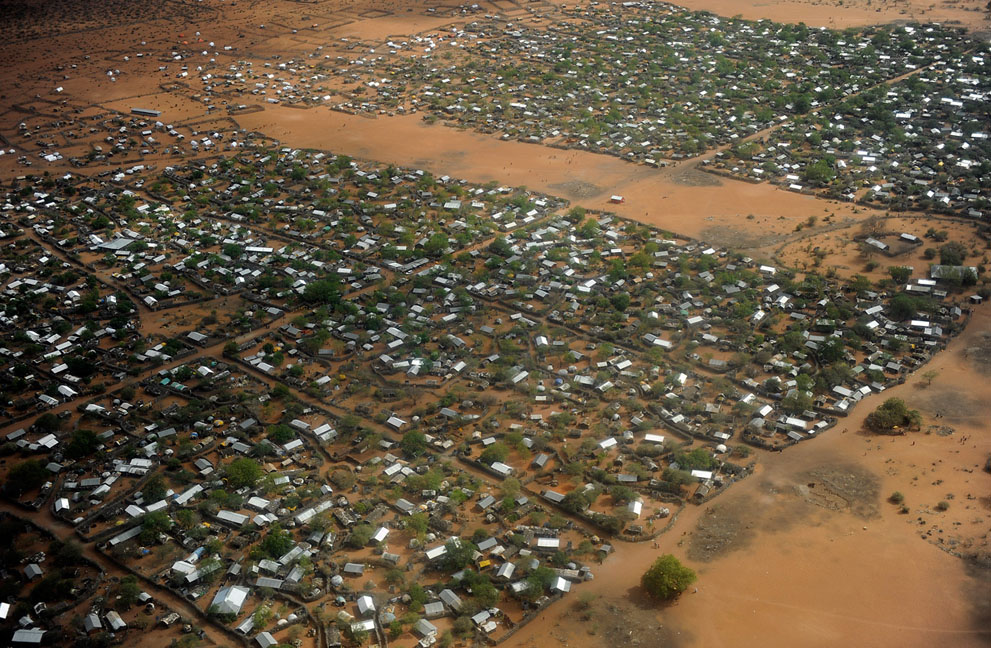 Geneva - A report released today by the UN High Commissioner for Refugees (UNHCR) shows 2011 to have been a record year for forced displacement across borders, with more people becoming refugees than at any time since 2000.
Geneva - A report released today by the UN High Commissioner for Refugees (UNHCR) shows 2011 to have been a record year for forced displacement across borders, with more people becoming refugees than at any time since 2000.UNHCR’s 2011 Global Trends report details for the first time the extent of forced displacement from a string of major humanitarian crises that began in late 2010 in Côte d’Ivoire, and was quickly followed by others in Libya, Somalia, Sudan and elsewhere. In all, 4.3 million people were newly displaced, with a full 800,000 of these fleeing their countries and becoming refugees.
“2011 saw suffering on an epic scale. For so many lives to have been thrown into turmoil over so short a space of time means enormous personal cost for all who were affected,” said António Guterres, the UN’s High Commissioner for Refugees and head of UNHCR, the UN refugee agency. “We can be grateful only that the international system for protecting such people held firm for the most part and that borders stayed open. These are testing times.”
Worldwide, 42.5 million people ended 2011 either as refugees (15.42 million), internally displaced (26.4 million), or in the process of seeking asylum (895,000). Despite the high number of new refugees, the overall figure was lower than the 2010 total of 43.7 million people, due mainly to the offsetting effect of large numbers of internally displaced people (IDPs) returning home: 3.2 million, the highest rate of returns of IDPs in more than a decade. Among refugees, and notwithstanding an increase in voluntary repatriation over 2010 levels, 2011 was the third lowest year for returns (532,000 returns) in a decade.
Viewed on a 10-year basis, the report shows several worrying trends: One is that forced displacement is affecting larger numbers of people globally, with the annual level exceeding 42 million people for each of the last five years. Another is that a person who becomes a refugee is likely to remain as one for many years – often stuck in a camp or living precariously in an urban location: Of the 10.4 million refugees under UNHCR’s mandate, almost three quarters (7.1 million) have been in protracted exile for at least five years awaiting a solution.
Overall, Afghanistan remains the biggest producer of refugees (2.7 million) followed by Iraq (1.4 million), Somalia (1.1 million), Sudan (500,000), and Democratic Republic of the Congo (491,000).
Around four-fifths of the world’s refugees flee to their neighbouring countries, reflected in the large refugee populations seen, for example, in Pakistan (1.7 million people), Iran (886,500), Kenya (566,500) and Chad (366,500).
The United Kingdom was sixth on the list of destination countries in Europe for new asylum seekers, with 25,500 applications, and was in eighth place globally. South Africa, meanwhile, was the largest recipient of individual asylum applications (107,000), a status it has held for the past four years. With regard to the total number of recognised refugees per country, the United Kingdom dropped out of the list of the top ten refugee hosting countries in 2011.
UNHCR’s original mandate was to help refugees, but in the six decades since the agency was established its work has grown to include helping many of the world’s internally displaced people and those who are stateless, i.e. lacking recognized citizenship and the human rights that accompany this. The 2011 Global Trends report notes that only 64 governments provided data on stateless people, meaning that UNHCR was able to capture numbers for only around a quarter of the estimated 12 million stateless people worldwide.
Of the 42.5 million people who were in a state of forced displacement as of the end of 2011, not all fall under UNHCR’s care: Some 4.8 million refugees, for example, are registered with our sister agency, the UN Relief and Works Agency for Palestine Refugees. Among the 26.4 million internally displaced, 15.5 million receive UNHCR assistance and protection. Overall, UNHCR’s refugee and IDP caseload of 25.9 million people grew by 700,000 people in 2011.